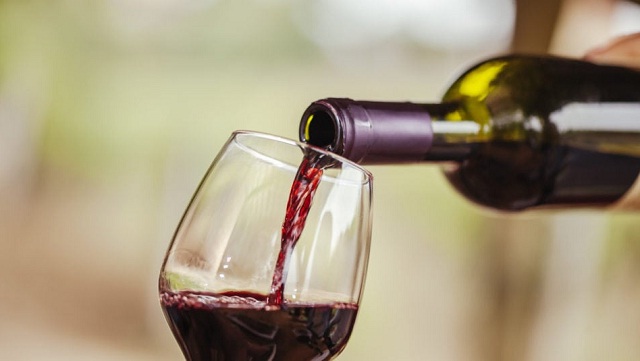
Amman, Jordan | AFP | Two Jordanian families aim to put wine from their desert land on the world viti cultural map, reviving an age-old tradition that some suggest has Biblical heritage.
Wine lovers like to say that the wine Jesus Christ served to his disciples at the Last Supper came from the northern town of Umm Qais in modern-day Jordan, to signify how old the country’s wine making tradition is.
“Wine was produced in Jordan more than 2,000 years ago but then it disappeared for centuries,” said Omar Zumot, who studied winemaking in France, and now manages the Saint George winery in an eastern suburb of Amman.
“It’s our responsibility to relaunch it,” he told AFP.
The Zumots and their main competitors, the Haddads, belong to Jordan’s Christian minority in a Muslim-majority kingdom, where the sale of alcohol is legal.
“We began to produce wine in 1996 and today we produce 400,000 litres a year,” Zumot said, during a tour of his winery, which makes a range of organic wines that are aged in 700 French oak barrels before being bottled.
“We’re only at the start of the road but my dream is to put Jordanian wines on the map.”
Firas Haddad, marketing manager of Eagle Distilleries, home of the award-winning Jordan River wine, shares that dream.
“We set up the first winery in 1975. We used to produce just two kinds of wines, white and red from grapes that we brought from Suweida in (neighbouring) Syria,” he said.
Today, the company based in Zarka, near Amman, produces wine from 45 varieties of grapes, most of them from vines brought to Jordan from France, Italy and Spain, he said.
– Ancient winemaking –
Swiss archaeologist Ueli Bellwald told AFP that winemaking in Jordan goes back much further than the time of Christ.
“Winemaking in Jordan does not date back only 2,000 years,” said Bellwald, who has been working on digs in the ancient Nabatean city of Petra for nearly three decades.
Wine production started in the Nabatean kingdom “in the middle of the first century BC” and reached a peak during the Roman and Byzantine periods, “based on the enormous number of wine presses from these times”, he said.
According to Bellwald, as many as 82 wine presses have been discovered in the Beidha-Baaja area of Petra in southern Jordan.
“There were even winemaking facilities of industrial scale,” he said.
– Basalt, water, sunshine –
Both the Haddads and the Zumots have vineyards in the northeastern Mafraq province neighbouring Syria and Iraq.
Mafraq is one of the most fertile regions of Jordan with soil rich in basalt that was formed by volcanic activity tens of thousands of years ago.
It lies 840 metres (2,800 feet) above sea level, is rich in underground water and enjoys sunshine 330 days a year, said Haddad.
All this makes for “exceptional” wine, he said.
The Haddads have set up the “Wine Experience” in the heart of Amman touted as Jordan’s first wine tasting lounge, and like the Zumots organise vineyard tours.
Tourists visiting the lounge, like Peggy from Australia and Frederic from France, were “surprised” that Jordan produces wine. Both noted the high price tags.
All alcoholic drinks, whether they are imported or domestically-produced, are subject to taxes that exceed 300 percent, while even items used in the production process face substantial duties.
“Customs duties are exorbitant and because of that (our) wine is expensive. The cheapest bottle sells for between 15-20 euros,” or $20 to $25, said Zumot.
His company exports only “small quantities” to Europe and some Arab countries, including Iraq, Qatar and the United Arab Emirates, he said, citing high shipping costs.
 The Independent Uganda: You get the Truth we Pay the Price
The Independent Uganda: You get the Truth we Pay the Price



